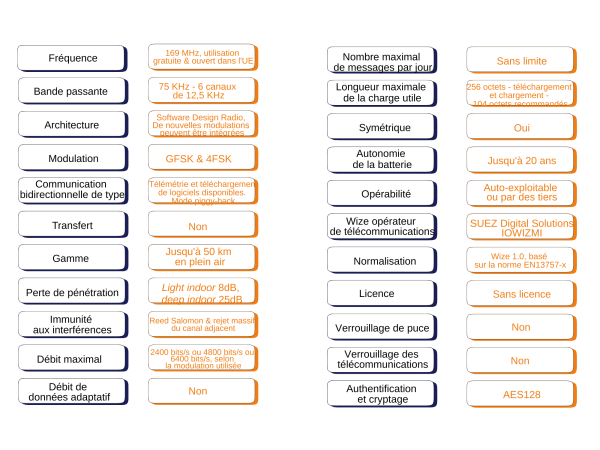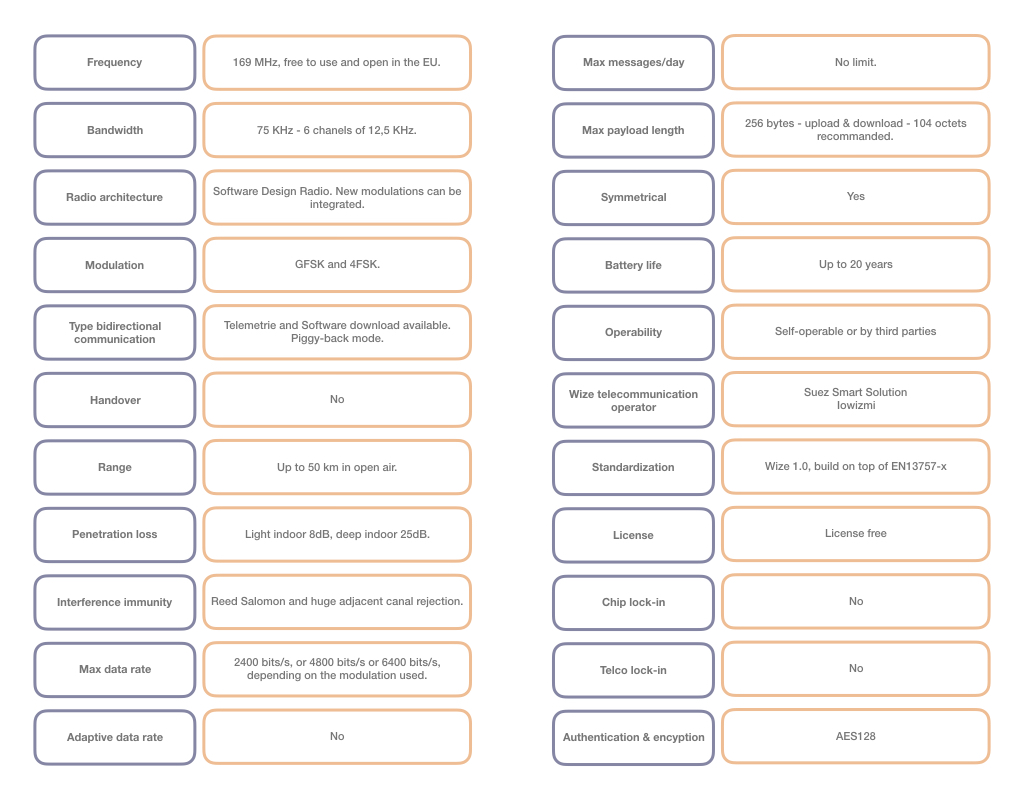Each technology addresses different uses. Choose the right one for you!
Based on a European standard
The Wize technology is a registered trade mark for a low-power, long-range and bi-directional radio communication that operates around the 169 MHz frequency. Although the Wize Technology was developed in VHF (very high frequency) 169 MHz, it is modular and works on other close frequency bands. The current version is based on the European standard 13757-x, defined by the European Union to accompany the deployment of communicating meters. The standard is open to other use cases for IoT since 2017.
Made for hard to reach areas
The Wize technology enables communication to range up to 50 kilometers in open field and has a good resistance to the phenomenon of attenuation. Specifically designed to connect hard to access objects (isolated or buried objects), Wize delivers secure information for Internet of Things applications for cities, industrial or tertiary sectors. This technology is especially designed for constrained environment: water and gas metering, public lighting, energy management of buildings, waste management…
Simple deployment requirements
On the scale of a wide territory, deployment of the network is simple and fast because the technology requires a minimum of equipment (a communicating object and a concentrator): no repeater system, no pairing or complex programming sensor.
The technology is already proven in many countries in Europe and Africa and it is rather easy to deploy a network on a local scale.
Low maintenance conditions
This technology has the ability to have connected objects that are sufficiently energy-efficient to last a very long time. For example, water and gas smart meters are powered by battery and they are expected to last 20 years for the most restrictive use.
Besides, with equal range, the attenuation of the low frequencies is smaller, so the Wize technology consumes less energy and allows a longer life.
Finally, since the technology requires only a limited number of equipment, it facilitates the operating and maintenance costs and conditions.
A non-polluted spectrum
It offers rates of message exchange between 2400 and 6400 bits/s all the while limiting the use of bandwidth and therefore collisions. Communications from one object to the gateways are carried out in broadcast mode in both directions, which allows multiple gateways to receive the same message from an object. Therefore, this system increases the performance of the radio solution by providing redundancy and high availability in the system. The Wize technology enables the management of a large number of objects in bi-directional mode and the secure transmissions of information from connected objects to the management platforms.


